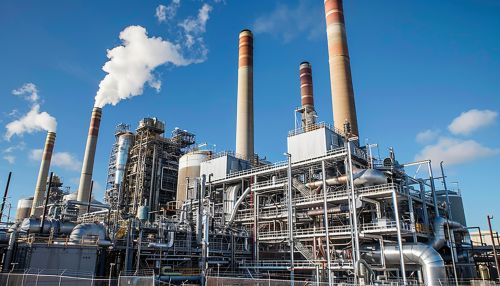Electrical equipment
Introduction
Electrical equipment refers to the various devices, systems, and materials used in the generation, transmission, distribution, and utilization of electrical energy. This includes a wide array of items, from small appliances and light bulbs to large-scale power generation facilities and transmission lines. The design, manufacture, and operation of electrical equipment are governed by a host of electrical engineering principles and regulations.
Types of Electrical Equipment
Electrical equipment can be broadly classified into three categories: generation equipment, transmission and distribution equipment, and end-use equipment.
Generation Equipment


Generation equipment is used to convert various forms of energy into electrical energy. This includes power stations or power plants, which can be fueled by coal, natural gas, nuclear energy, renewable energy sources like wind and solar, and more. Within these facilities, generators convert mechanical energy into electrical energy.
Transmission and Distribution Equipment
Transmission and distribution equipment is used to carry electrical energy from the point of generation to the point of use. This includes transmission lines, transformers, circuit breakers, and switchgear. Transformers are used to step up (increase) or step down (decrease) the voltage of electricity for efficient transmission and distribution.
End-Use Equipment
End-use equipment refers to the devices and appliances that consume electrical energy to perform their function. This includes lighting fixtures, electric heaters, air conditioners, electric motors, and a wide range of household appliances.
Safety and Standards
The design and operation of electrical equipment are subject to a variety of safety standards and regulations. These are intended to prevent electrical accidents, such as electric shock, fire, and explosion, which can result from the improper use or malfunction of electrical equipment. Standards are set by various organizations, such as the Institute of Electrical and Electronics Engineers (IEEE) and the International Electrotechnical Commission (IEC).
Maintenance and Testing
Regular maintenance and testing are essential to ensure the safe and efficient operation of electrical equipment. This can include visual inspections, performance testing, and preventative maintenance tasks such as cleaning and lubrication. In addition, specialized testing equipment is used to assess the condition and performance of electrical equipment, such as insulation resistance testers, earth fault loop impedance testers, and power quality analyzers.
Environmental Impact
The production and use of electrical equipment have significant environmental impacts. These include the consumption of natural resources in the manufacture of equipment, the emission of greenhouse gases and other pollutants in the operation of power plants, and the generation of electronic waste when equipment reaches the end of its useful life. Efforts to mitigate these impacts include the development of energy-efficient equipment, the use of renewable energy sources, and the recycling of electronic waste.
Future Trends
The field of electrical equipment is continually evolving, driven by advances in technology and changing societal needs. Key trends include the increasing use of renewable energy sources, the development of smart grids and smart appliances, and the growing importance of energy efficiency.
